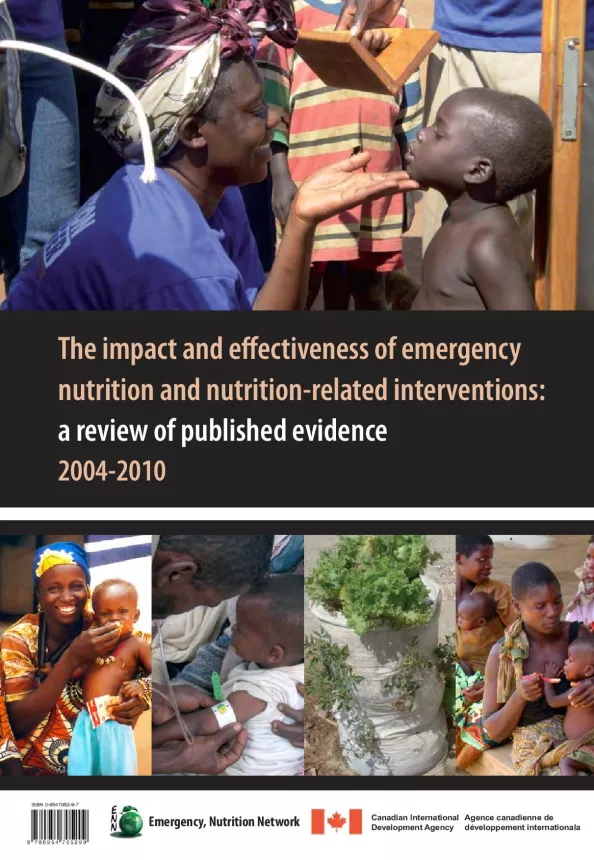The impact and effectiveness of emergency nutrition and nutrition-related interventions: a review of published evidence 2004-2010
Publication details
 The WHO has released guidance on updated evidence and practice for key interventions in the management of severe acute malnutrition (SAM) in infants and young children. The guideline is intended for a wide audience, including policy-makers, their expert advisers, and technical and programme staff in organisations involved in the design, implementation and scaling-up of nutrition actions for public health. The guideline will form the basis for a revised manual on the management of severe malnutrition for physicians and other senior health workers1, and a training course on the management of severe malnutrition.
The WHO has released guidance on updated evidence and practice for key interventions in the management of severe acute malnutrition (SAM) in infants and young children. The guideline is intended for a wide audience, including policy-makers, their expert advisers, and technical and programme staff in organisations involved in the design, implementation and scaling-up of nutrition actions for public health. The guideline will form the basis for a revised manual on the management of severe malnutrition for physicians and other senior health workers1, and a training course on the management of severe malnutrition.
This guideline does not reflect all WHO recommendations related to the management of children with SAM but only those related to areas that were prioritised by the guideline development group2. Relevant standing recommendations are included adjacent to updated recommendations, to contextualise updated recommendations. Other WHO recommendations will be addressed in future guideline updates.
Recommendations are made regarding the following:
- Admission and discharge criteria for children who are 6–59 months of age with SAM
- Where to manage children with SAM who have oedema
- Use of antibiotics in the management of children with SAM in outpatient care
- Vitamin A supplementation in the treatment of children with SAM
- Therapeutic feeding approaches in the management of SAM in children who are 6–59 months of age
- Fluid management of children with SAM
- Management of HIV-infected children with SAM
- Identifying and managing infants who are less than 6 months of age with SAM
The evidence available for the development of recommendations, was in general of very low quality, due to the limited availability of randomised controlled trials, trials comparing existing WHO recommendations with new treatment options, or trials documenting comparisons of diagnosis and treatment methods identified by the guideline development group as requiring review. Where direct evidence was not available, indirect evidence from different population groups, or different intervention strategies has been noted, if appropriate. The need for future research directly addressing several of the areas of concern was highlighted.
WHO. Guideline: Updates on the management of severe acute malnutrition in infants and children. Geneva: World Health Organization; 2013. http://www.who.int/nutrition/publications/en/
1Management of severe malnutrition: a manual for physicians and other senior health workers. WHO, 1999
2WHO Nutrition Guidance Advisory Group – Subgroup on Nutrition in the Life Course and Undernutrition 2010–2012
